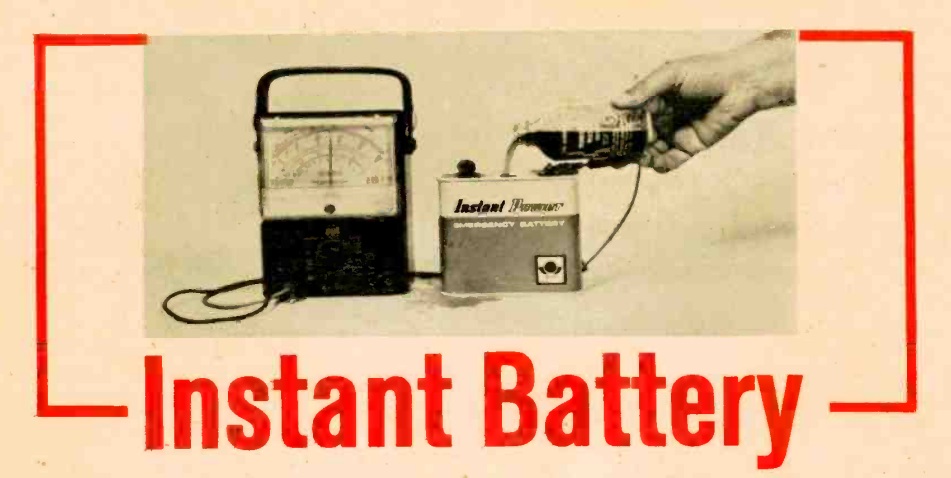 Sixty years ago, the September 1968 issue of Electronics Illustrated carried a review of this interesting product, an emergency battery.
Sixty years ago, the September 1968 issue of Electronics Illustrated carried a review of this interesting product, an emergency battery.
Batteries have a finite shelf life, so to extend it, this dry cell was sold dry. In its dormant state, it had a guaranteed shelf life of five years. When needed, you added the electrolyte, which could be any water-based liquid. In the test, the magazine used window washer fluid, but almost any liquid could be used, such as soda, or what the magazine euphemistically called “second hand beer.” After activation, the battery was good for 72 hours.
The battery was available for $5.95 from the Globe Battery Division of Globe-Union, Inc., Milwaukee. A matching lantern was available for $10.95.
Since modern alkaline batteries have a long shelf life, it’s probably not necessary to have this battery today. The best modern equivalent is probably the one shown here, which allows a cell phone or other USB device to be charged with four AA alkaline batteries.
Another option for emergency charging is s standard 12 volt USB charger. Even if the car battery is unavailable, in most cases, these chargers consist of little more than a voltage regulator, so if they’re hooked to any source of more than five volts, they can be used in an emergency. So if you desperately need to charge your phone, you can use one of these adapters, along with four flashlight batteries or a 9-volt battery, as demonstrated in this video:
For another emergency battery that can be made using household goods, see our earlier post.

